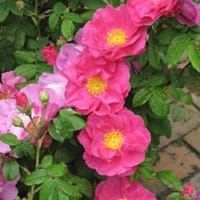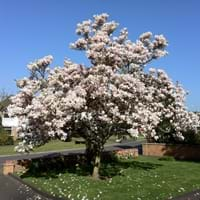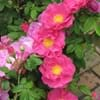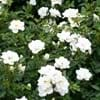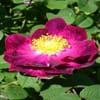Life Span
Perennial
Perennial
Origin
Central Europe, Southern Europe
Hybrid origin
Types
Not Available
Gwillimia, Manglietia, Kmeria
Number of Varieties
Not Available
Habitat
Temperate Regions
Subtropical climates, Tropical regions
USDA Hardiness Zone
5-9
6-9
Sunset Zone
H1, H2, 6, 7, 8, 9, 12, 13, 14, 15, 16, 17, 18, 19, 20, 21, 22, 23, 24
Not Available
Habit
Upright/Erect
Oval or Rounded
Flower Color
Dark Purple, Pink, Purple
Purple, Pink, Light Pink, Rose
Flower Color Modifier
Not Available
Bicolor
Fruit Color
Dark Blue, orange brown
Brown
Leaf Color in Spring
Dark Green
Green
Leaf Color in Summer
Dark Green
Green
Leaf Color in Fall
Dark Green, Yellow green, Orange Red
Green, Yellow green, Sandy Brown
Leaf Color in Winter
Light Green
Not Available
Plant Season
Spring, Summer, Fall
Spring, Summer
Sunlight
Full Sun, Partial Sun
Full Sun, Partial Sun
Growth Rate
Medium
Medium
Type of Soil
Loam, Sand
Clay, Loam, Sand
The pH of Soil
Acidic, Neutral
Acidic, Neutral
Soil Drainage
Well drained
Well drained
Bloom Time
Spring, Late Spring, Early Summer, Summer, Late Summer, Early Fall, Fall
Spring, Late Spring
Repeat Bloomer
Not Available
No
Tolerances
Drought
Not Available
Where to Plant?
Container, Ground, Pot
Ground
How to Plant?
Cuttings
Seedlings, Transplanting
Plant Maintenance
Medium
Medium
Watering Requirements
Average Water Needs
Prefer drip-irrigation instead of Over-head watering
In Summer
Lots of watering
Lots of watering
In Spring
Moderate
Moderate
In Winter
Average Water
Average Water
Soil pH
Acidic, Neutral
Acidic, Neutral
Soil Type
Loam, Sand
Clay, Loam, Sand
Soil Drainage Capacity
Well drained
Well drained
Sun Exposure
Full Sun, Partial Sun
Full Sun, Partial Sun
Pruning
Remove damaged leaves, Remove dead branches, Remove dead leaves
Prune if you want to improve plant shape
Fertilizers
All-Purpose Liquid Fertilizer
Fertilize in late fall, fertilize in spring, Requires high amount of nitrogen
Pests and Diseases
Beetles, Black Spot, Caterpillars, Downy mildew, Mosaic viruses, Powdery mildew, Rust, Scale insects, Thripes
Aphids, Bacterial Blight, Canker, Crown gall, Hoplia beetle, Leaf burn, Leaf spot, Mealybugs, Powdery mildew, Red blotch, Scorch, Soft scales, Thripes, Wetwood
Plant Tolerance
Drought
Not Available
Flower Petal Number
Double
Single
Edible Fruit
Not Available
No
Foliage Texture
Medium
Coarse
Foliage Sheen
Glossy
Matte
Invasive
Not Available
No
Self-Sowing
Not Available
No
Attracts
Birds, Butterflies
Not Available
Allergy
Rash
Not Available
Aesthetic Uses
Showy Purposes
Showy Purposes
Beauty Benefits
Not Available
Treatment of Dark Spots
Environmental Uses
Air purification
Air purification
Medicinal Uses
Not Available
Alzheimer’s Disease, Anxiety, Cancer, Digestion problems, Liver problems, Menstrual Cramps, Respiratory Disorders, Weight loss
Part of Plant Used
Flowers
Whole plant
Other Uses
Oil is used in perfume, soaps, creams, etc.
Used as Ornamental plant, Used for its medicinal properties
Used As Indoor Plant
Yes
Yes
Used As Outdoor Plant
Yes
Yes
Garden Design
Container, Cutflower, Feature Plant, Foundation, Mixed Border, Topiary / Bonsai / Espalier
Feature Plant, Foundation, Shade Trees
Botanical Name
Rosa Gallica
MAGNOLIA 'Alexandria'
Common Name
Rose of Provins, Gallic Rose, French Rose
Alexandria Magnolia, Magnolia
In Hindi
Gallica Rose
हिम चम्पा
In German
Gallica Rose
Magnolienbaum
In French
Gallica Rose
magnolia
In Spanish
Gallica Rose
árbol de magnolia
In Greek
Gallica Rose
Magnolia δέντρο
In Portuguese
Gallica Rose
magnólia
In Polish
Gallica Rose
magnolia drzewa
In Latin
Gallica Rose
Magnolia lignum
Phylum
Magnoliophyta
Magnoliophyta
Class
Magnoliopsida
Magnoliopsida
Order
Rosales
Magnoliales
Family
Rosaceae
Magnoliaceae
Clade
Not Available
Angiosperms, Magnoliids
Tribe
Not Available
Not Available
Subfamily
Not Available
Not Available
Number of Species
Not Available
Season and Care of Gallic Rose and Magnolia Tree
Season and care of Gallic Rose and Magnolia Tree is important to know. While considering everything about Gallic Rose and Magnolia Tree Care, growing season is an essential factor. Gallic Rose season is Spring, Summer and Fall and Magnolia Tree season is Spring, Summer and Fall. The type of soil for Gallic Rose is Loam, Sand and for Magnolia Tree is Clay, Loam, Sand while the PH of soil for Gallic Rose is Acidic, Neutral and for Magnolia Tree is Acidic, Neutral.
Gallic Rose and Magnolia Tree Physical Information
Gallic Rose and Magnolia Tree physical information is very important for comparison. Gallic Rose height is 50.00 cm and width 80.00 cm whereas Magnolia Tree height is 460.00 cm and width 370.00 cm. The color specification of Gallic Rose and Magnolia Tree are as follows:
Gallic Rose flower color: Dark Purple, Pink and Purple
Gallic Rose leaf color: Dark Green
Magnolia Tree flower color: Purple, Pink, Light Pink and Rose
- Magnolia Tree leaf color: Green
Care of Gallic Rose and Magnolia Tree
Care of Gallic Rose and Magnolia Tree include pruning, fertilizers, watering etc. Gallic Rose pruning is done Remove damaged leaves, Remove dead branches and Remove dead leaves and Magnolia Tree pruning is done Prune if you want to improve plant shape. In summer Gallic Rose needs Lots of watering and in winter, it needs Average Water. Whereas, in summer Magnolia Tree needs Lots of watering and in winter, it needs Average Water.
